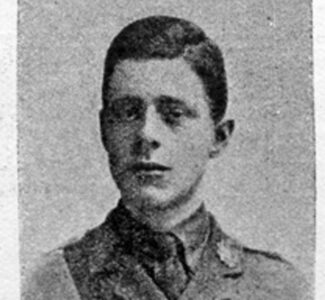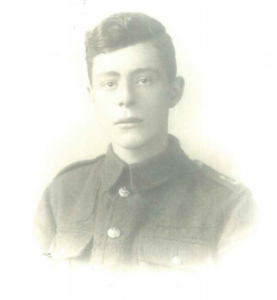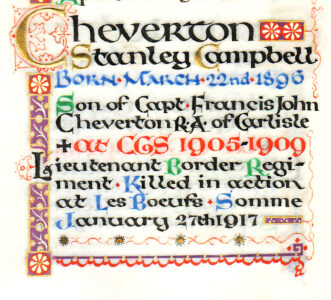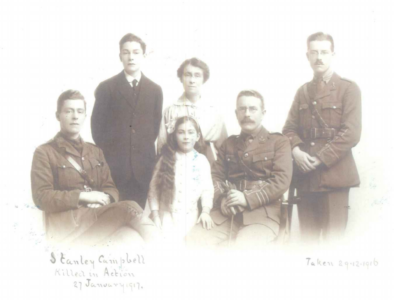Key Information
Name: Stanley Campbell Cheverton (Smith)
DoB: March 22 1896
Regt: Lieut., Border Regt.
DoD: January 27 1917
Academic Career: CGS 1905-1909
Other: Went to. St.Aidan’s Vicarage Prep. School. Apprenticed to National Provincial Bank, Head Office, Newcastle-on-Tyne.
-
Stanley Campbell Cheverton was born Stanley Campbell Smith, son of Captain Francis John Smith and Clarissa Mary Campbell, in South Africa in 1896. His older brother Francis Penn had similarly been born in Cape Town three years earlier, although younger siblings Reginald and Lorna were born in Kent and Carlisle respectively. Their father was a soldier and rose to the rank of Lieut Col and was later an army chaplain who also served in the Great War. The family changed its name in 1905 to Cheverton (the maiden name of Francis John Smith’s mother). According to Reginald’s daughter someone had suggested there were too many Smiths in the army! Stanley was a keen musician and played the organ at Carlisle Cathedral (where he is now commemorated in the Border Regiment Chapel). Older brother Frank served in India during both world wars and survived.




